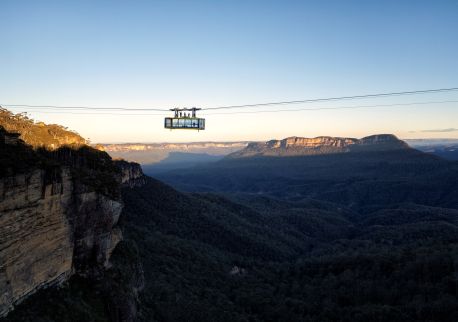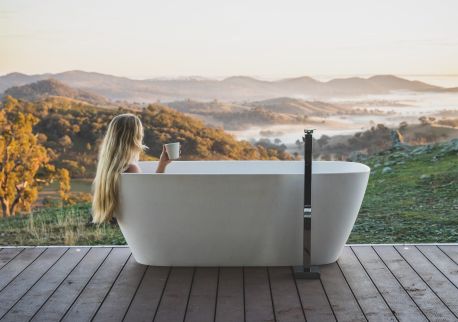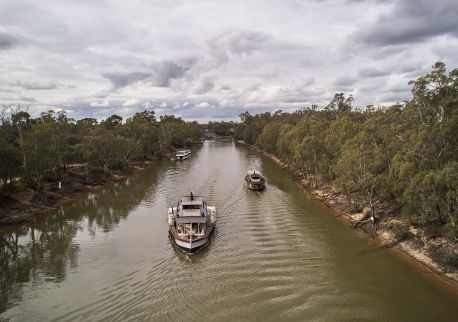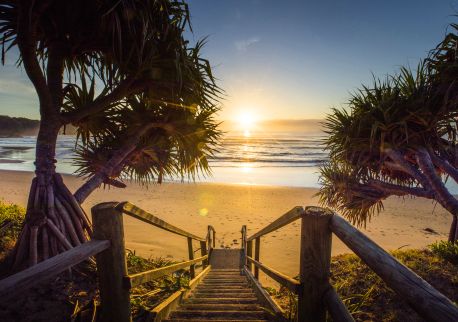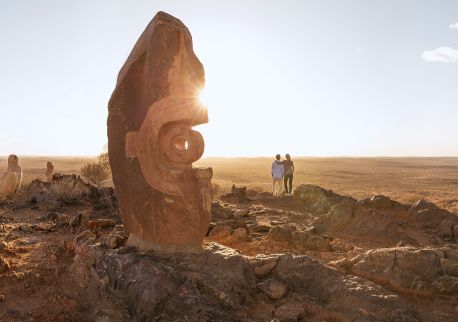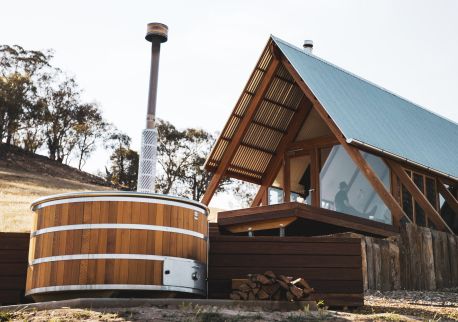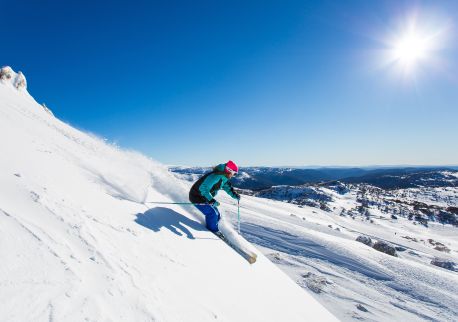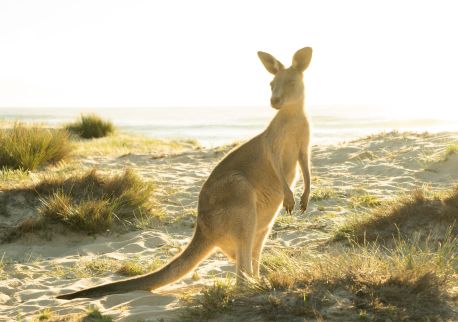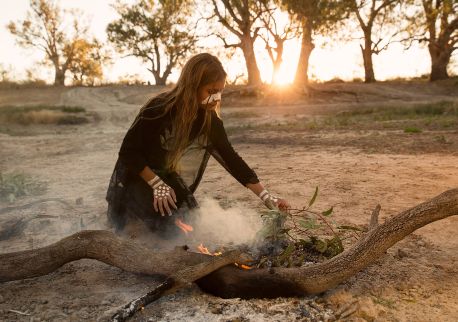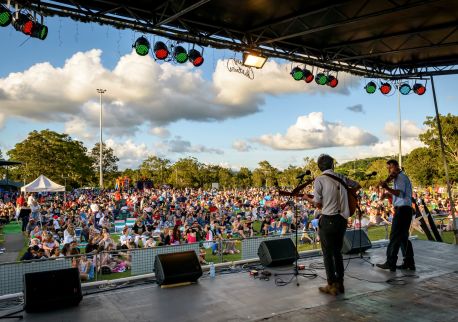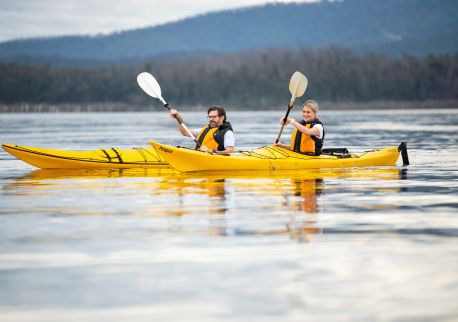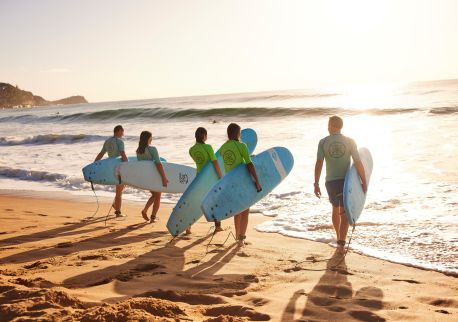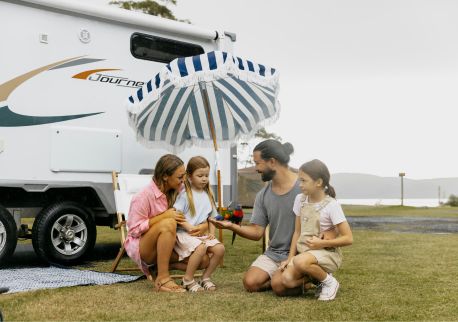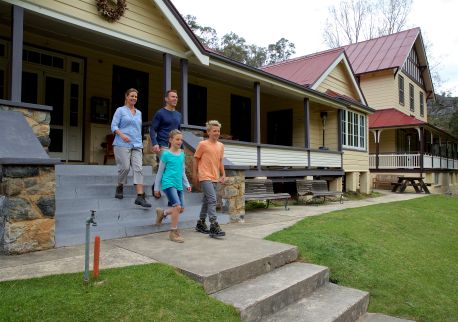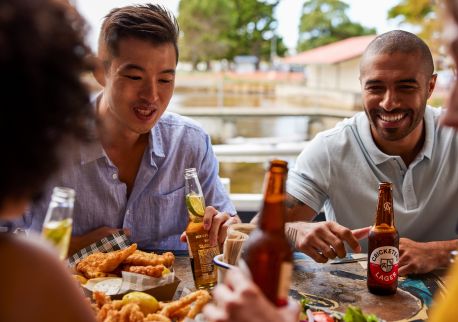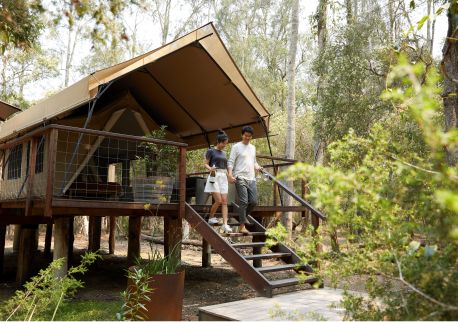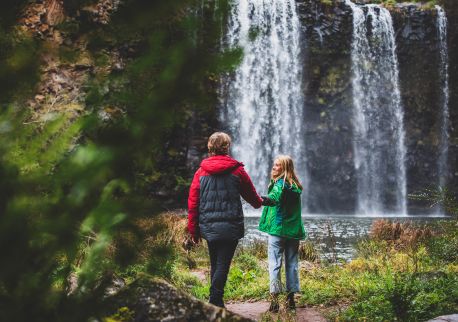In spring and summer, NSW is bejewelled with colourful wildflowers that decorate coastal walking tracks and thread through national parks. Here’s where to spot some of the state’s most beautiful blooms and the best time to visit.

Destination NSW
Jul 2024 -
3
min readKosciuszko National Park
Best time to visit: November to April.
Once the last of the powdery white snow melts into the Snowy Mountains, the high-altitude Kosciuszko National Park comes to life with purple eyebrights, yellow billy buttons and everlasting daisies. Wildflower walks are everywhere: adventure up high to the Main Range track or Dead Horse Gap walking track where alpine trees give way to open fields blooming with magnificent patches of snowy white gentians, anemone buttercups, alpine sunrays and more; walk along the Thredbo River Track to see sub-alpine wildflowers growing along the banks; or set out on the Illawong Walk from Guthega, where you can set up a picnic among bushels of alpine mint, billy buttons, and native yam daisies, and even go for an exhilarating dip in the cool waters of Snowy River.

Wildflowers, Kosciuszko National Park - Credit: Thredbo
Bouddi National Park
Best time to visit: September to December.
The coastal tracks and towering forests of the Bouddi Peninsula are some of the only trails in Australia that will lead you to snow-white patches of the stunning flannel flower, a delicate daisy-like Australian native. Take in this stunning rare beauty as you trek along the Flannel Flower Walking Track, or book a spot on Elixir Journeys' Bouddi Wildflower Walk in spring which explores lesser-known parts of Bouddi National Park on the Central Coast. As well as sightings of this special flower, you’ll also come across views that stretch all the way to Sydney.

Bouddi National Park, Gosford - Credit: Michael Van Ewijk/DPE
Booderee National Park
Best time to visit: September to April.
Setting foot in Booderee National Park is like stepping into paradise, with more than 460 different indigenous plants growing within this protected patch of Jervis Bay. Home to Australia’s only Aboriginal-owned botanic gardens, you will find many native beauties. Watch birds flock to the fiery orange heath banksia, common around Hole in the Wall Beach and see the pretty pink pinnate boronia stud the path along the Booderee National Park: Telegraph Creek Nature Trail. Don’t forget to look out for NSW’s state flower, the crimson waratah, which blooms from September to November and visit in spring to see the spectacular round-leaf tea tree flowers in bloom.

Booderee National Park and Botanic Gardens, Jervis Bay
Redlands Hill Reserve
Best time to visit: September to November.
Sometimes a short wander off the beaten path will lead you to the most special sights. This little patch of woodlands near Corowa on the Murray River is an ecological wonder that is a real hidden gem. Protected since 1999, Redlands Hill Reserve boasts a handful of easy walking trails that will lead you to a number of serene forest scenes (interrupted only by kangaroos hopping past!). A place where Aboriginal communities have gathered for thousands of years, this grassy hill offers a diversity of plants and berries. You’ll see golden wattle in bloom, along with bush peas, native lilies, wedge-leaf hop-bush and plenty of everlasting daisies.

Everlasting daisies, Redlands Hill Reserve - Jessica Stokes
Toorale National Park and State Conservation Area
Best time to visit: March to October after summer rainfall.
The outback may conjure visions of red dirt and sweeping desert plains, but follow the rivers and you’ll find pockets of greenery thriving with birdlife and open floodplains that burst with colour after rain. Located at the junction of Warrego and Darling rivers, Toorale National Park is just an hour’s drive from Bourke, and offers dramatic naturescapes straight out of a watercolour painting. An easy amble along the Warrego Floodplain walking track can take you past golden sunray daisies, bluebells, billy buttons and pigweed. Pack a picnic and spend your lunch sitting beneath a shady coolibah tree at Many Big Rock picnic area, and make a pit stop at Mount Talowla lookout to take in views of seasonal wildflowers growing on the floodplains towards Mount Gunderbooka.

Toorale National Park, Bourke - Credit: Nicola Brookhouse/DPE
Crowdy Bay National Park
Best time to visit: September to November.
There’s no better picnic spot than one that’s surrounded by forest and flowers, and that’s exactly what you’ll come across at Kylies Hut in Crowdy Bay National Park – just an hour south of Port Macquarie. Settle down in a shady glen beside paperbarks and sheoaks, and after lunch wander the Metcalfes Walking Track. Not only will you likely spot a local koala or eastern grey kangaroo that call this area home, but you’ll stroll past a rainbow of wildflowers, attracting flocks of nectar-loving birds. Sadly, the Kylies Hut you’ll find is a rebuild; the rustic home of novelist and journalist Kylie Tennant in the late 1960s burned down in the 2019–2020 bushfires and only the foundations survived.

Metcalfes walking track, Forster and Taree - Credit: Debby McGerty/DPE
Blue Mountains National Park
Best time to visit: September to January.
With World Heritage-listed rainforests and some of the most famous views in the country, the Blue Mountains is known for its natural beauty. A hike in spring will also have you walking through a sea of colourful wildflowers. On the Lockleys Pylon walking track near Leura, past the eucalypt forests and sandstone cliffs, you’ll encounter lambertia shrubs that spike up with the red flower known as the ‘mountain devil’. If the conditions are right, you can also see pink flannel flowers. From Blackheath, the easy Fairfax Heritage walking track opens up to forests of peppermint and scribbly gums, and in early summer, vibrant red waratahs.

Wildflowers at Wentworth Falls to Murphy's Glen via Ingar campground, Wentworth Falls - Credit: Stephen Alton/DPE
Ku-ring-gai Wildflower Garden
Best time to visit: August to September.
St Ives’ Ku-ring-gai Wildflower Garden is part-natural bushland, part-garden. Visitors exploring the free, 124-hectare area can spot wildflowers in their natural habitat on bush trails or in the gardens closer to the visitor’s centre. Although August’s boronia and wax flower blooms make it the most spectacular month to visit, there is almost always something flowering. Visit in winter to see bottle brushes at their best, and in October to November to see the garden’s orchids and acacia. To check the bloom schedule, call two weeks before your visit and the garden staff can tell you where to find specific flowers. If you want to take the colour of the bush home, stop by the Wildflower Nursery, which sells locally occurring, flowering plants.

Ku-ring-gai Wildflower Garden, St. Ives - Credit: Ku-ring-gai Council
Muogamarra Nature Reserve
Best time to visit: August to September.
Muogamarra Nature Reserve is one of Sydney’s best-kept secrets, mostly because it’s only accessible for a short time each year. The reserve, just to the north of Cowan and sandwiched between the Hawkesbury River and Berowra Creek, is open for just six weeks, when the land is decorated with over 900 species of rare wildflowers. Journey through the bush spotting old-man banksias, native orchids, angophoras and pink boronias, with dreamy views of the river in between. If you’re lucky, you may spot an echidna or wedge-tail eagle or hear the intriguing sounds of a lyrebird. Ensure you book early, the reserve is only open to travellers on guided or self-guided tours and it can sell out quickly.

Spring wildflowers at Muogamarra Nature Reserve, Cowan - Credit: Elinor Sheargold/DCCEEW
Please note: Check the National Parks website to make sure certain walking tracks are open before visiting.

